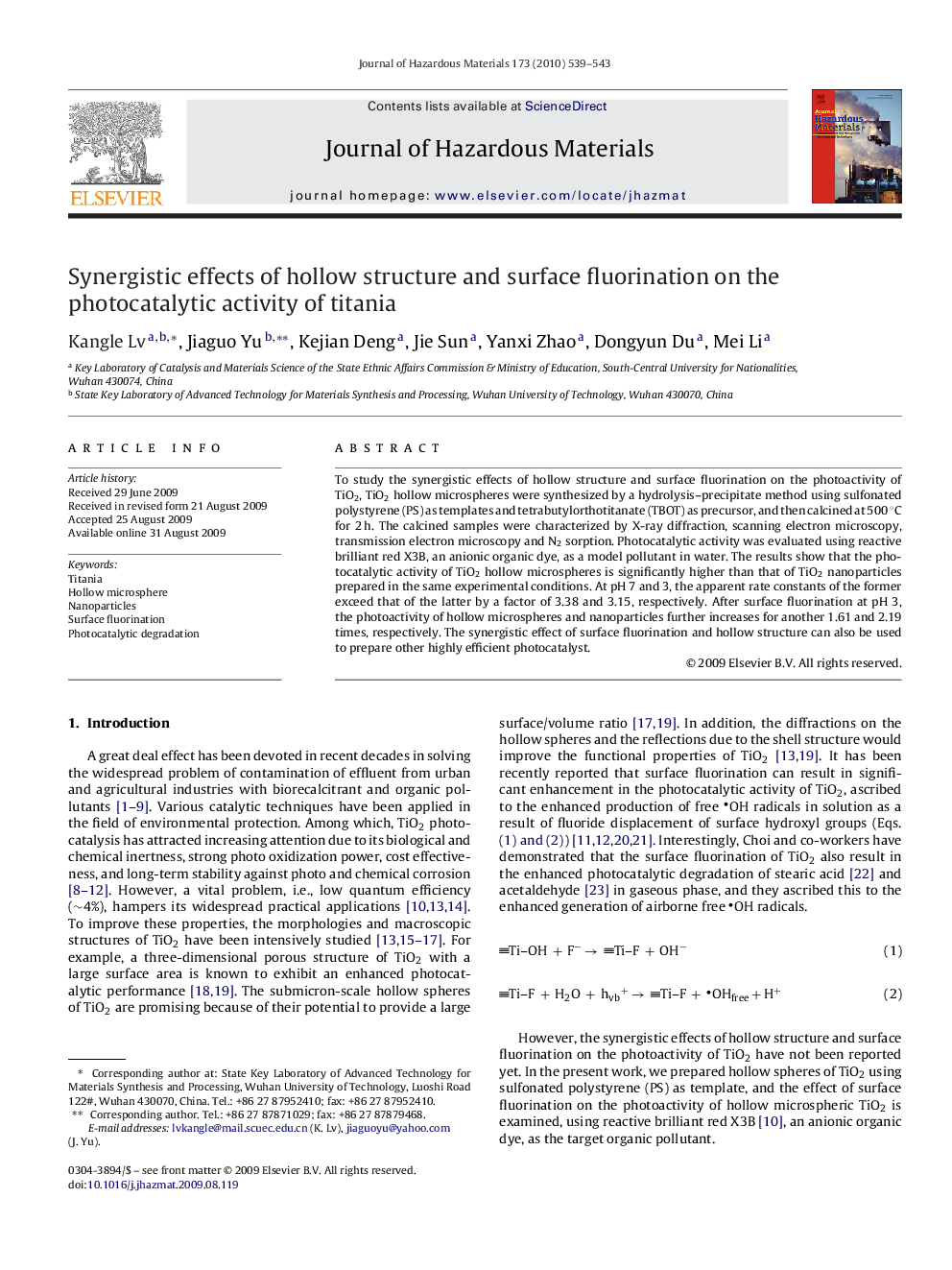| Article ID | Journal | Published Year | Pages | File Type |
|---|---|---|---|---|
| 581003 | Journal of Hazardous Materials | 2010 | 5 Pages |
Abstract
To study the synergistic effects of hollow structure and surface fluorination on the photoactivity of TiO2, TiO2 hollow microspheres were synthesized by a hydrolysis-precipitate method using sulfonated polystyrene (PS) as templates and tetrabutylorthotitanate (TBOT) as precursor, and then calcined at 500 °C for 2 h. The calcined samples were characterized by X-ray diffraction, scanning electron microscopy, transmission electron microscopy and N2 sorption. Photocatalytic activity was evaluated using reactive brilliant red X3B, an anionic organic dye, as a model pollutant in water. The results show that the photocatalytic activity of TiO2 hollow microspheres is significantly higher than that of TiO2 nanoparticles prepared in the same experimental conditions. At pH 7 and 3, the apparent rate constants of the former exceed that of the latter by a factor of 3.38 and 3.15, respectively. After surface fluorination at pH 3, the photoactivity of hollow microspheres and nanoparticles further increases for another 1.61 and 2.19 times, respectively. The synergistic effect of surface fluorination and hollow structure can also be used to prepare other highly efficient photocatalyst.
Related Topics
Physical Sciences and Engineering
Chemical Engineering
Chemical Health and Safety
Authors
Kangle Lv, Jiaguo Yu, Kejian Deng, Jie Sun, Yanxi Zhao, Dongyun Du, Mei Li,
